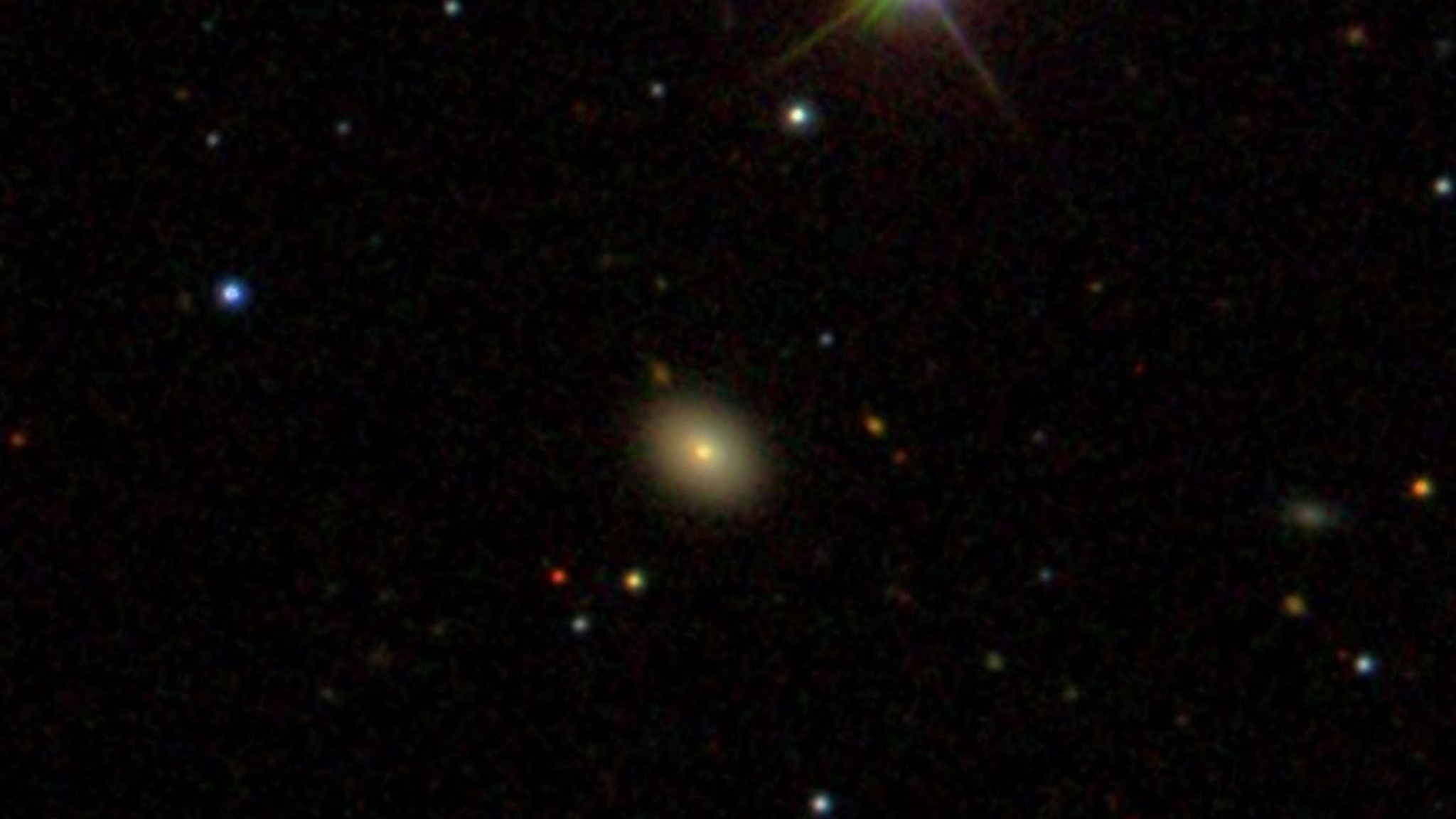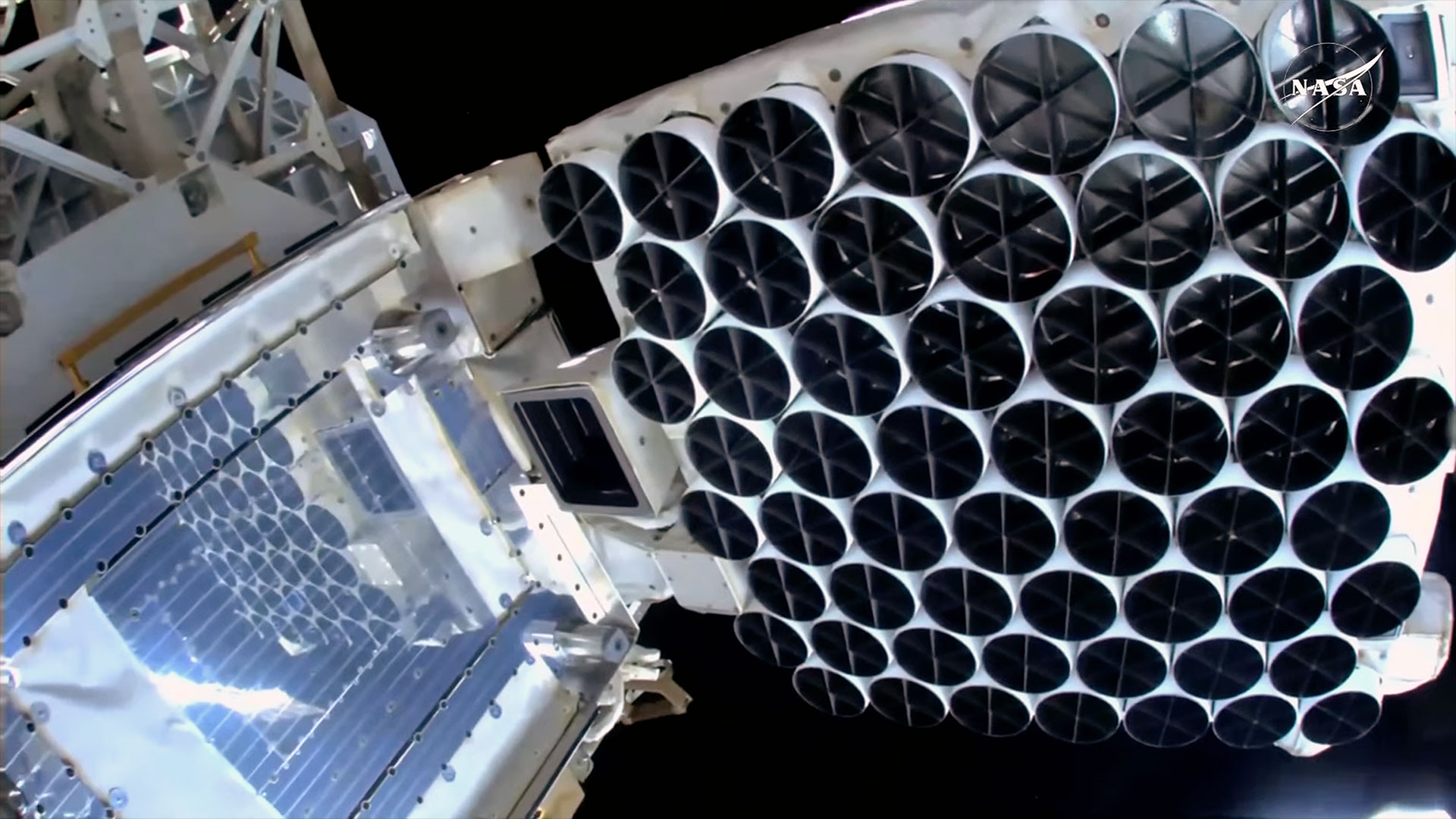Doomed star circling supermassive black hole could be ripped apart in less than 6 years
On each pass, the star kicks out one Jupiter's worth of mass from the black hole's disk.

A star in a faraway galaxy is sending itself into a spiral of doom, repeatedly plunging through a disk of hot gas surrounding a black hole and releasing powerful bursts of X-rays in the process. Soon, it will be torn apart.
That's the assessment of what's going on in the core of a galaxy about 300 million light-years away called LEDA 3091738, where a giant black hole nicknamed "Ansky" is being orbited by a much lower-mass companion object.
The name is derived from the black hole's official designation of ZTF10acnsky, as its outbursts were spotted by the Zwicky Transient Facility on the Samuel Oschin Telescope at California's Palomar Observatory in 2019.
Now, new findings show that Ansky flares in X-rays roughly every four-and-a-half days, and that each flare lasts one-and-a-half days before dying back down and waiting for the cycle to begin again. Astronomers call these flares "quasi-periodic eruptions," or QPEs. So far, only eight sources of QPEs have been discovered in the entire universe, and Ansky produces the most energetic eruptions of those eight.
These new findings are thanks to a team led by Joheem Chakraborty, who is a Ph.D. student at the Massachusetts Institute of Technology, using the Neutron star Interior Composition Explorer (NICER) that is fastened to the exterior of the International Space Station, in concert with the European Space Agency's XMM-Newton X-ray space telescope.
"These QPEs are mysterious and intensely interesting phenomena," said Chakraborty in a statement. "One of the most intriguing aspects is their quasi-periodic nature. We're still developing the methodologies and frameworks we need to understand what causes QPEs, and Ansky's unusual properties are helping us improve those tools."
And so, we're slowly forming a picture of why Ansky produces the X-ray flares.
Breaking space news, the latest updates on rocket launches, skywatching events and more!

The supermassive black hole involved has a mass on the order of a million suns. It's surrounded by what's called an accretion disk, which is a torus of hot gas swirling around the black hole, waiting to be consumed. Meanwhile, a lower mass object, likely a star, is orbiting very close to the black hole and periodically plows through the accretion disk. As it does so, shockwaves ripple through the torus and heat the gas closest to the star's entry point. This heated gas has to get out of the way of the star, causing huge, expanding clouds of material to be sent billowing into space. It's the heating of this material expelled from the disk that produces the QPEs.
"In most QPE systems the supermassive black hole likely shreds a passing star, creating a small disk very close to itself," said Lorena Hernández-García of the Millennium Nucleus on Transversal Research and Technology to Explore Supermassive Black Holes (TITANS) and the University of Valparaíso, both in Chile. It was Hernández-García who led astronomers to discover Ansky back in 2019. "In Ansky’s case, we think the disk is much larger and can involve objects farther away, creating the longer timescales we observe."
Chakraborty's team monitored Ansky with NICER 16 times per day between May and July of 2024, tracking the periodicity of the eruptions and monitoring any changes in that periodicity. After adding XMM-Newton data to fill in any gaps, what they discovered is bad news for the star.
The star's orbital energy provides enough juice to heat the gas in the disk and then expel a quantity of material equivalent to Jupiter's mass at velocities up to 15% of the speed of light. Each time the star plows through the disk and produces a QPE, it loses some orbital energy, causing it to spiral closer to the maw of the black hole.
Assuming the star has the same mass as our sun, then it would take another 400 QPEs — spanning about 2,000 days, or 5 to 6 years — for it to lose all its orbital energy. This process would shrink its orbit, resulting in QPEs happening increasingly faster, until the star is either ripped apart by the black hole's gravitational tidal forces, or otherwise merges with it. If the star has a greater mass than our Sun, then it can survive for longer.
Either way, the degradation of the star's orbit, corresponding to a faster rate of QPEs, should be apparent in the next few years and the rate at which the QPEs are becoming more frequent should tell astronomers about the companion star’s mass.
"We're going to keep observing Ansky for as long as we can," said Chakraborty. "We're still in the infancy of understanding QPEs. It’s such an exciting time because there’s so much to learn."
NICER and XMM-Newton will continue monitoring Ansky, which should eventually enable a more precise prediction of when the star will run out of orbital energy and be destroyed. When that happens, it will release a torrential outpouring of energy and astronomers will be able to witness a star being ripped apart in real time, from beginning to end.
The results from Ansky were published on 6 May in The Astrophysical Journal.
Join our Space Forums to keep talking space on the latest missions, night sky and more! And if you have a news tip, correction or comment, let us know at: community@space.com.

Keith Cooper is a freelance science journalist and editor in the United Kingdom, and has a degree in physics and astrophysics from the University of Manchester. He's the author of "The Contact Paradox: Challenging Our Assumptions in the Search for Extraterrestrial Intelligence" (Bloomsbury Sigma, 2020) and has written articles on astronomy, space, physics and astrobiology for a multitude of magazines and websites.
You must confirm your public display name before commenting
Please logout and then login again, you will then be prompted to enter your display name.
